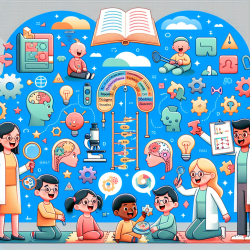Introduction: Transforming School Bus Safety with Data-Driven Decisions
As a speech-language pathologist, ensuring the safety and well-being of children is paramount. With the ongoing challenges posed by COVID-19, innovative strategies are needed to maintain safety while optimizing resources. The recent research article titled Seat Assignments With Physical Distancing in Single-Destination Public Transit Settings offers valuable insights that can be applied to school bus transportation, ultimately benefiting the children we serve.
Understanding the Research: Key Takeaways
The study presents two models for optimizing seat assignments in public transit settings, focusing on physical distancing and household grouping. By using a mixed-integer programming model and a heuristic for household grouping, the research demonstrates that seating assignments can be generated in near real-time, increasing vehicle capacity without compromising safety.
These findings are particularly relevant for school buses, where seating arrangements can significantly impact safety and efficiency. By considering household relationships among passengers, the models allow for more flexible seating arrangements, accommodating more students while adhering to physical distancing guidelines.
Applying the Research: Practical Implications for Speech Language Pathologists
For speech-language pathologists working in schools, understanding and applying these seating strategies can enhance the overall safety and efficiency of student transportation. Here are some practical steps to consider:
- Collaborate with School Administrators: Work with school transportation coordinators to implement the research findings, ensuring that seating arrangements consider household relationships and physical distancing requirements.
- Educate and Advocate: Use your expertise to educate school staff and parents about the benefits of optimized seating arrangements, advocating for their adoption in school transportation policies.
- Monitor and Evaluate: Continuously monitor the effectiveness of implemented seating strategies, using data-driven evaluations to make informed decisions and improvements.
Encouraging Further Research and Collaboration
The application of these research findings is just the beginning. Speech-language pathologists are encouraged to engage in further research and collaboration with transportation experts, educators, and policymakers to explore additional ways to enhance safety and efficiency in school transportation.
Conclusion: A Path Forward for Safer School Transportation
By leveraging the insights from the research on seat assignments with physical distancing, speech-language pathologists can play a crucial role in improving school transportation safety. This approach not only protects the health and well-being of students but also supports their educational success by ensuring reliable and safe transportation to and from school.
To read the original research paper, please follow this link: Seat Assignments With Physical Distancing in Single-Destination Public Transit Settings.










